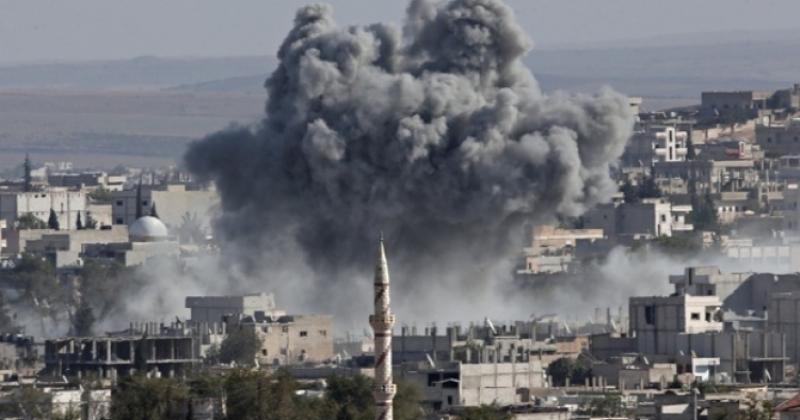By the end of 2014, after initial successes on several fronts in both Iraq and Syria, ISIL forces began to be pushed back on several fronts. The most important factor in ISIL's retreat were the US-led air attacks. During the five months of air attacks that commenced in August ending on December 30, the coalition, according to Pentagon spokesman Navy Commander Bill Urban, "flew 13,232 combat missions and dropped 3,891 munitions."
If the same amount of missions were to be conducted in 2015, they would total nearly 40,000 combat strikes within 18 months, entailing substantial destruction. It is important to note that Urban stressed "combat" missions. This does not include refueling tankers' orbits, intelligence, reconnaissance and other missions in which no bombs were dropped.
According to Daniel Goure, a defense analyst, such figures obscure the real dimension of the air campaign. For example, just 250 strikes require the support of an additional 3,800 aircraft, 1,700 tanker flights and around 700 other kinds of sorties. In addition, each combat mission is supported by thousands of ground crews, air traffic controllers and armored personnel. This includes air and drone bases throughout the Gulf Arab states as well as Jordan and Turkey.
There are approximately four million troops in the armies of these states ostensibly available or engaged in fighting ISIL. But due to geopolitical clashes among nearly all of these states -- Iraq, Iran, Turkey, Jordan, Syria and Lebanon -- all have been reluctant to fully engage ISIL. It is non-state actors that have done most of the fighting, especially Syrian Kurds, who are directly threatened by ISIL forces. The reluctance of countries in the Middle East to strongly contest ISIL resulted in its ability to occupy one-third of Iraq and one-third of Syria.
It is this reluctance of the Middle Eastern states mentioned above that has led to ISIL's ability to kill, rape and ethnically cleanse thousands of Shiites, Christians and Yazidis. On December 29, a respected Syrian monitoring group with scores of observers in Syria reported that in the last six months ISIL forces had killed 1,878 people, the majority of them civilians. The monitoring group also reported that ISIL had killed 980 members of an Arab Sunni tribe, the Sheitaat, in fighting over control of oil wells.
It must be mentioned here that other atrocities have also taken place numerous times between not just ISIL/jihadists forces, but between Sunnis and Shiites as well. Shiite militias have reportedly killed hundreds if not thousands of Sunnis, especially in mutually contested towns and villages.
But in the last four months Kurds, Christians, Yazidis and some Arab tribes in both Iraq and Syria have joined other government-state and non-state actors in picking up arms against ISIL forces. Syrian Kurds, with aid from their Kurdish brothers and sisters in Iraqi Kurdistan and Turkey, have recently made impressive gains against ISIL forces, recapturing some 50 squares miles of land south of the Turkey-Syria border.
Syrian Kurds now have 65,000 soldiers under the command of the Democratic Union Party (YPG). The YPG and the Kurdistan Regional Government (KRG) in Iraq, with an estimated 150,000 soldiers, are the strongest combat forces against ISIL. In the last two months both groups have been receiving billions of dollars in weapons from the US and European countries. But Kurdish forces are unwilling to advance into what they consider "Arab lands."
These Kurdish forces in Iraq and in Syria are expected to cooperate closely with the 3,100 US Special Operation Troops and the 82nd Second Airborne Division's 3rd Brigade Combat Team scheduled to deploy in Iraq in January. These troops will be joined by 1,500 other coalition troops. Most of these troops will deploy to commence fighting against ISIL forces in Anbar province, positioned in towns along the Euphrates River from Baghdad to the Syrian border.
When ISIL forces are cleared from Iraq, especially from Mosul and probably in the next six months or so, the war will be continued further into Syria. Undoubtedly this is why serious negotiations took place among key officials of the Assad regime in both Moscow and Tehran in December. More negotiations are scheduled for January.
These negotiations will further weaken ISIL. It is unlikely that a viable, let alone effective, ISIL fighting force will remain by the end of 2015.
